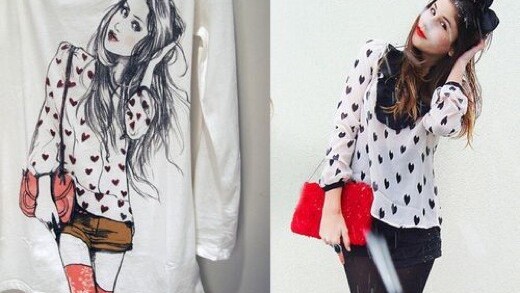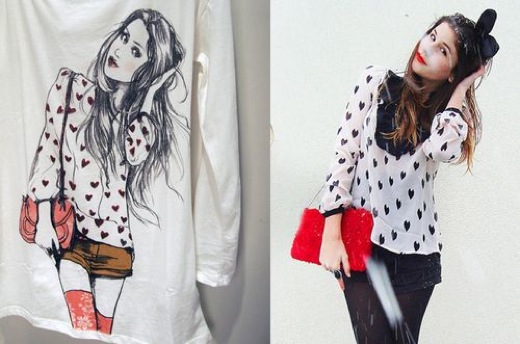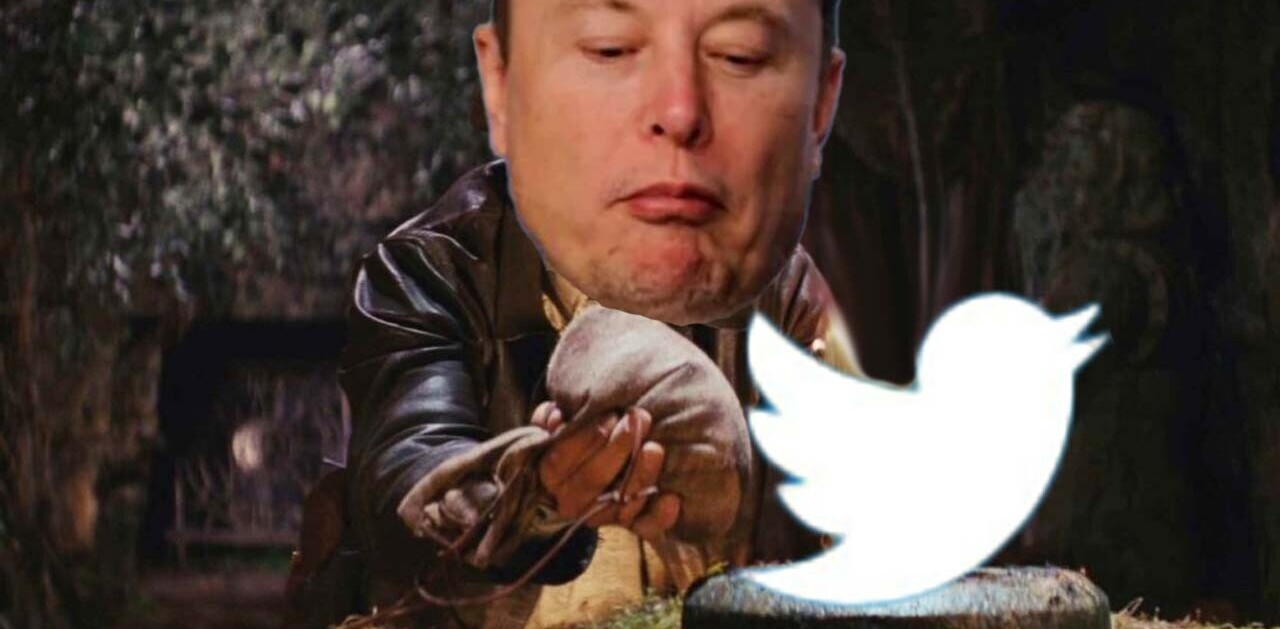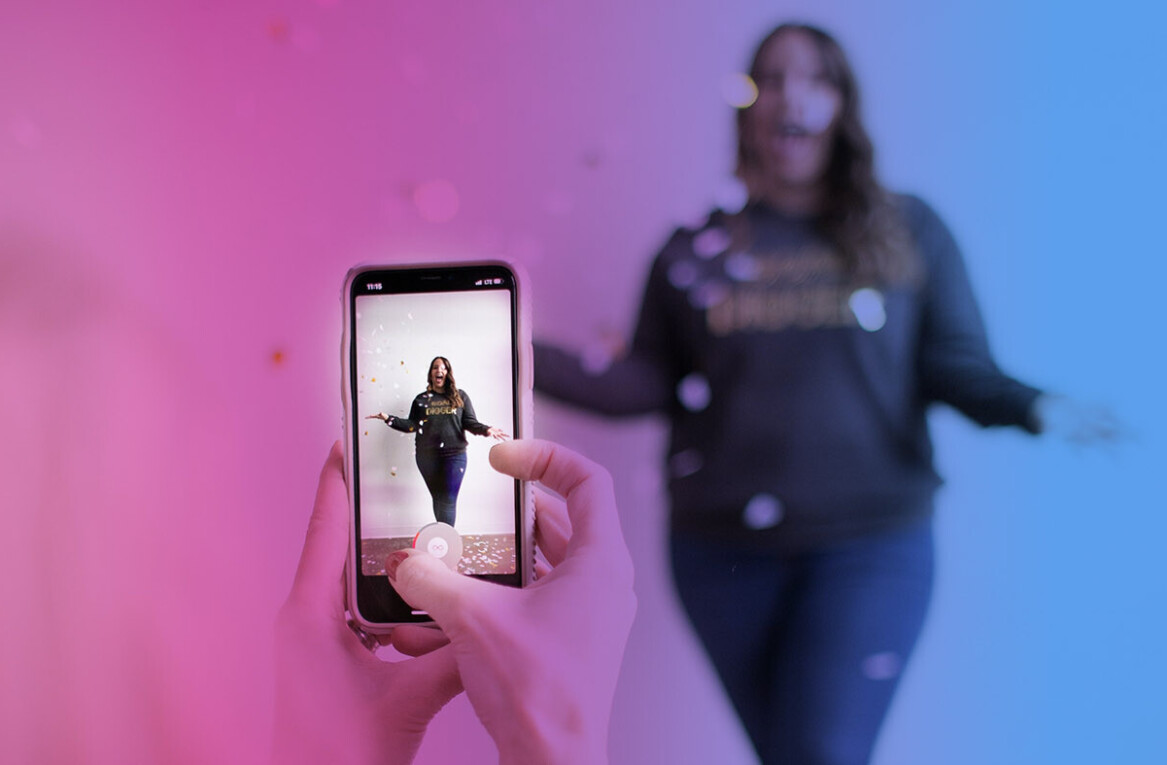

In the words of Heidi Klum: “In fashion, one day you’re in and the next you’re out.”, well these days fashion and style bloggers are IN: in fashion weeks, in the first row list, in all fashion parties and openings VIP lists and in business with the biggest fashion houses and magazines.
Although at first magazine editors seemed unwilling to share their authority and front row seats with them, soon they decided to make up and unite their styling superpowers with some air kissing and fabulous photoshoots . Today most magazines feature regularly bloggers in their issues and collaborate with them on their sites. Most recently we covered Teen Vogue’s relationship with the blogging community.
The bloggers – editors relationship has deeper roots than the common love for the eternal hunt of fashion’s hottest next trend, magazines turned to bloggers for another reason: the fashion brands that advertise in them, from haute couture to fast fashion, adore them. In fact, as celebrities lose rapidly their influence over younger consumers’ buying decisions, many brands choose bloggers not only to be their ambassators but also to shape their brand’s future. Most recently Rebecca Minkoff hired Daniel Saynt, founder of Fashion Indie, as her chief marketing officer, while Chanel is also rumored to be launching soon a campaign featuring five bloggers as brand ambassadors. While the list of successful brands- bloggers collaboration goes on and on, with bloggers emerging even as designers, there are still some dark clouds in the sky, like the backlash Spanish retailer Inditex group, has suffered on social media and several blogs, accusing it for copying photographs from blogs to use on T-shirt designs without permission. As reported, Inditex group, one of the world’s largest retailers, was forced to withdraw the controversial Tshirts, sold under the brand Stradivarius. According to a company’s spokesman the blame lies with the outside designer they used and it is that company that should have got the rights. No matter what goes, the truth is that this is not the first time we read about a faux pas like this by Inditex, in the past several other bloggers, like Facehunter, Betty and Miss Pandora have accused another Inditex brand, Zara for the same mistake.
We asked marketing innovation strategist and blog curator for L2, a think tank for luxury brands focusing on digital innovation, Lauren Proctor to comment: “It sounds so basic, but it seems to me that the most fundamental rule in the way corporations relate to bloggers should revolve around respect. I don’t know the absolute law on using someone’s picture for a shirt, but it seems like the least Inditex group could have done was ask for permission to use the photo. Better yet, offer a percentage of sales or create some sort of win-win situation where both the company and the blogger profit. Even if the profits aren’t monetary for all sides, I think more often than not brands will find that bloggers are more than willing to cooperate anyone they love. These bloggers would have probably loved to have built a campaign around the shirt where Inditex group gives them recognition and they get to promote the shirt to their fans.”
Lauren thinks that a brand’s success goes beyond leveraging bloggers influence, one of her “to watch” companies, is a new company called OpenSky that connects consumers to products that have been curated by individuals: “It’s a brilliant business model because the people who are promoting the products do all the marketing for you. They spread the product through their network and transactions ensue. OpenSky is capitalizing on influence. Boutiques.com also plays on the idea of influence, as are so many others who have moved to this curated model. What Inditex group did was the equivalent of including someone in a memoir but never telling them until after the book was published. These bloggers are influential and instead of leveraging her influence to help sell more shirts, they could have potentially started a grassroots boycott from fans.”

A prime example of brand-bloggers collaboration according to Lauren is leading American designer and maker of luxury lifestyle handbags and accessories Coach: “I think Coach has done a good job with bloggers, especially with their Poppy Project. Other good examples are more behind the scenes, but they always have to do with brands reaching out to bloggers as individuals. The brands that value bloggers for who they are will end up with the most profitable relationships and that will never change.”
Yuli Ziv, founder of Style Coalition, Editor-In-Chief of MyItThings, and organizer of Fashion 2.0 Meetups, who has blogged in the past about the importance of establishing ground rules when bloggers decide to monetize or protect their content, sees this as a challenge for fashion bloggers to defend their work and a wake up call for all brands: “ I like to bring an example of American Living campaign Style Coalition produced for JCPenney. it was a win win for both bloggers and the brand, as we managed to make it look authentic without compromising bloggers own voices. Bloggers were also compensated for their work, which is #1 mission of Style Coalition in addition to enforcing ethical guidelines – to make sure bloggers are always compensated for their craft (like with any work for hire). It’s easier to enforce those rules when you are part of an organization representing you, rather than a blogger trying to work with a brand individually.”

“Most people get into blogging for their love of writing and the subject of fashion itself. As they get bigger and start being approached by brands, they are challenged to make business decisions that aren’t trivial, as the space is so new. Unfortunately we see certain brands taking advantage of bloggers’ lack of business savvy or the ability to estimate their true worth. They land their voice or their blog for the love of a brand, without realizing they are actually participating in a “free marketing campaign”.
The case of Inditex group might represent the worst scenario in these relationships, when a brand not only under values the bloggers as content creators, but also ignores the fact their assets might be copyrighted, like any original work. This will probably be a great wake up call for an international retailer of this scale, and an opportunity to finally start a dialog with bloggers. If they are smart about it, they might be able to turn their ignorance into a new chapter, infused with social media engagement. As much as people love watching a social media #fail unfold, they love even more watching brands fixing their mistakes by listening to customers.”
**
This post could be titled “Fashion brands and bloggers: How to go from happily ever after to an affair to remember”. What do you think, how high is the price a brand pays for getting on bloggers’ bad side and could working with big retailers lead to bloggers losing their freshness?
Get the TNW newsletter
Get the most important tech news in your inbox each week.





